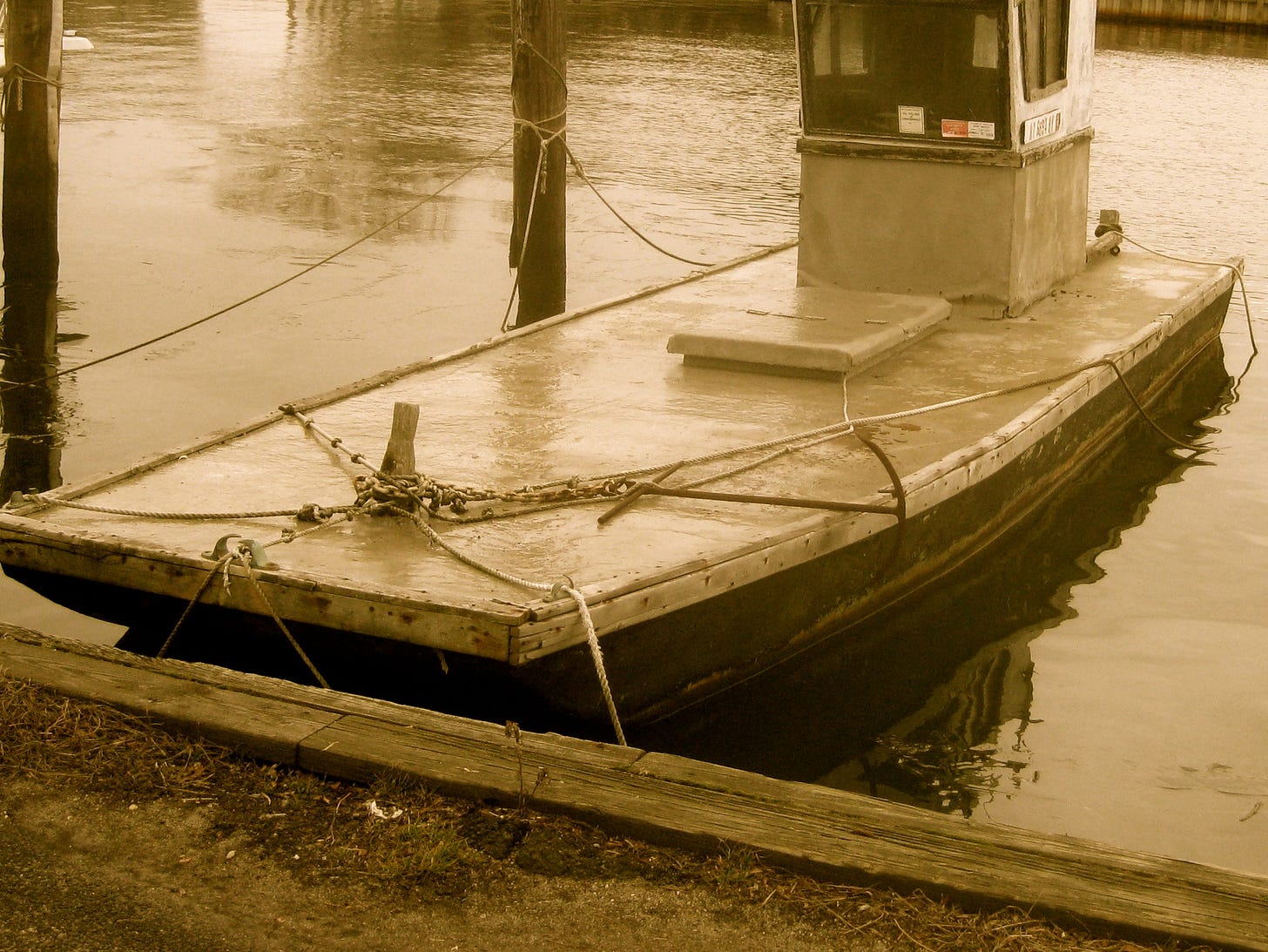Some Clamboats of Babbington
The professional, the clammy, took to the bay in a broad-beamed clamboat. Some of the newer ones had been built in basements or back yards specifically for motorized clamming. They were, as a group, homely and unpretentious craft, roughly rectangular, rising slightly at the bow. Placed near the stern was a small cabin, just large enough to allow the clammy to get out of the sun or the rain for a while, to eat his lunch and drink his beer. Others were converted sailing craft, relics of the days when men were men and clamboats had no motors. These broad-beamed, shallow-draft boats had had their masts and centerboards removed, and now had engines. A few clamboats of both types had engines that were specifically designed for marine use, but most had marine conversions of engines from worn-out cars.
Little Follies, “Do Clams Bite?”
[more to come on Thursday, June 24, 2021]
Have you missed an episode or two or several?
You can catch up by visiting the archive.
You can also download a free ePub of “My Mother Takes a Tumble,” the first novella in Little Follies. It should be readable in any e-reader app, but I’ve found that it looks best in Apple’s Books app viewed on an iPad.









Growing up in Providence, about 40 miles from the shoreline, my strongest connection with the ocean was through clam cakes. A mixture of dough and clams was dropped into a deep fryer and cooked until it was dark brown. Clam cakes were always heavily salted. They were crisp on the outside and soft on the inside. Because they were dropped into the hot oil, they came out roughly spherical but with odd looking appendages. There was something pre-historic about them. They were what I imagined ancient food looked like. Clam cakes were very filling and sat heavily in the stomach, but after a rare day at the the beach with my grandparents, they were the perfect food.